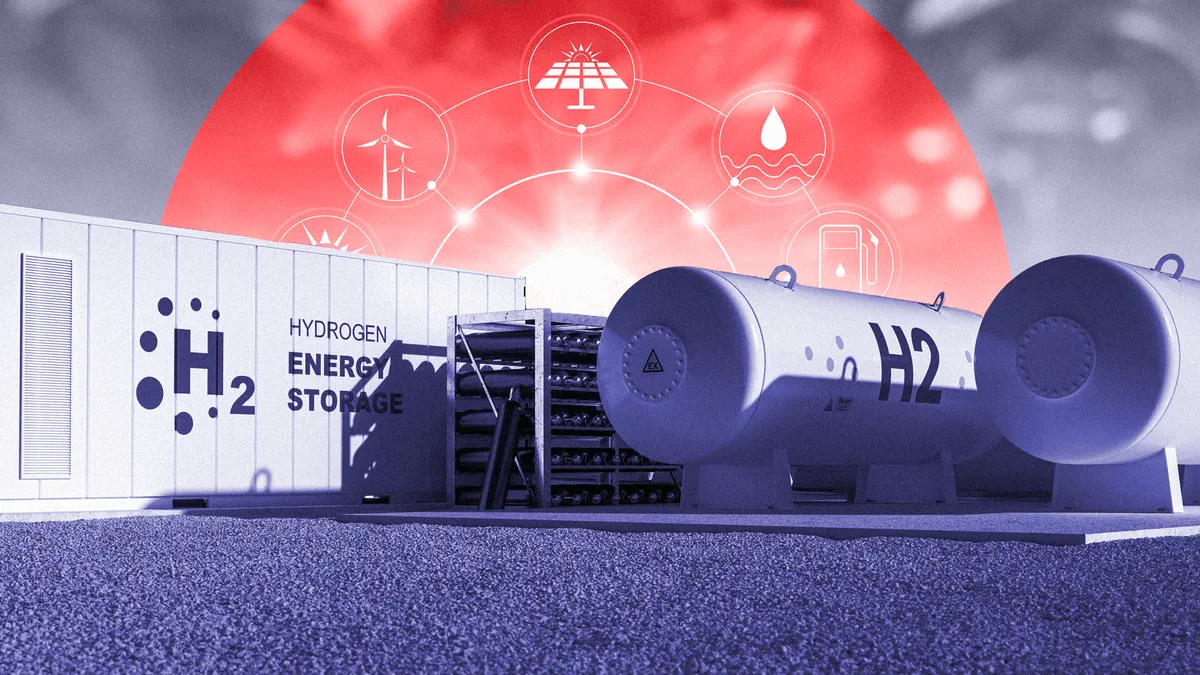Dive Brief:
-
Utility interest in hydrogen is "beyond staggering" and may soon begin showing up in long-term integrated resource plans, according to GE Gas Power Emergent Technologies Director Jeffrey Goldmeer.
-
"You may not see it publicly yet, but we've talked with customers, and privately they've shared to us that when they make their next filing, [hydrogen] will be part of their filing," he said in an interview. Particularly for large companies with public commitments to eliminate carbon emissions entirely or become neutral by mid-century, hydrogen is becoming more and more attractive, he said.
- GE has been accused by market analysts of misjudging the clean energy transition in its focus on gas turbines over renewable energy resources during the natural gas boom earlier this decade, but the company is eager to play a role in the power sector's growing focus on hydrogen.
Dive Insight:
Hydrogen was once considered more of a periphery fuel in the broader energy transition, but has emerged front and center in 2020.
"There's a lot of talk about a lot of different technologies" and how they can complement a broader utility resource mix as companies aim to produce zero-emitting power, said Goldmeer, but "I'm not sure that any have captured the imagination, the way hydrogen has." Though economics for the fuel remain difficult, and some analysts don't see it reaching economic viability until 2030, investor interest in the fuel is growing quickly, with many focused on using the power sector to bring the resource to scale.
"I think it's going to mimic very much how solar was," said Mona Dajani, co-leader of Pillsbury law firm’s Energy and Infrastructure Projects team and leader of its Renewable Energy Practice. Solar "started out kind of clunky, and then it just accelerated quicker than anyone thought." Dajani leads her firm's hydrogen practice and expects deals to accelerate and buildout to materialize in the next three to five years.
Hydrogen production is an energy intensive process, and therefore not always considered "carbon free." Though the fuel itself emits no carbon, "gray" hydrogen is produced when fossil fuels are used to create the resource and "blue" hydrogen is made when emissions from producing the fuel are stored with carbon capture. The more environmentally attractive "green" hydrogen is created through electrolysis powered by renewable energy.
GE argued in a white paper published Tuesday that both kinds of hydrogen are needed. It also argues in part that the promise of hydrogen gives natural gas an obvious path within the energy transition, particularly for short-term emissions reductions.
But that may be a downside of hydrogen, argues Julie McNamara, senior energy analyst with the Union of Concerned Scientists, in a December blog post — that it allows the status quo of centralized fossil fuel generation to continue operating under the long-term promises of carbon capture and hydrogen-blend fuels. Carbon capture, for example, has been promised as a solution to emitting power plants for years, and is in part what GE says will be essential to deployment of blue hydrogen, but the economics have yet to be proven out at scale.
"It's important to admit to ourselves that as we go down this journey for decarbonizing, there is no path that you can take that keeps us without additional cost," acknowleged Goldmeer. But for any type of hydrogen, building out the infrastructure to scale will be essential, he said.
"If we believe that in a 2050 world we're going to be highly dependent on hydrogen for a variety of sectors, it's going to take some time to get that amount of hydrogen produced," he said. "I can't magically make all that hydrogen infrastructure happen at once, it will take decades to build up."















